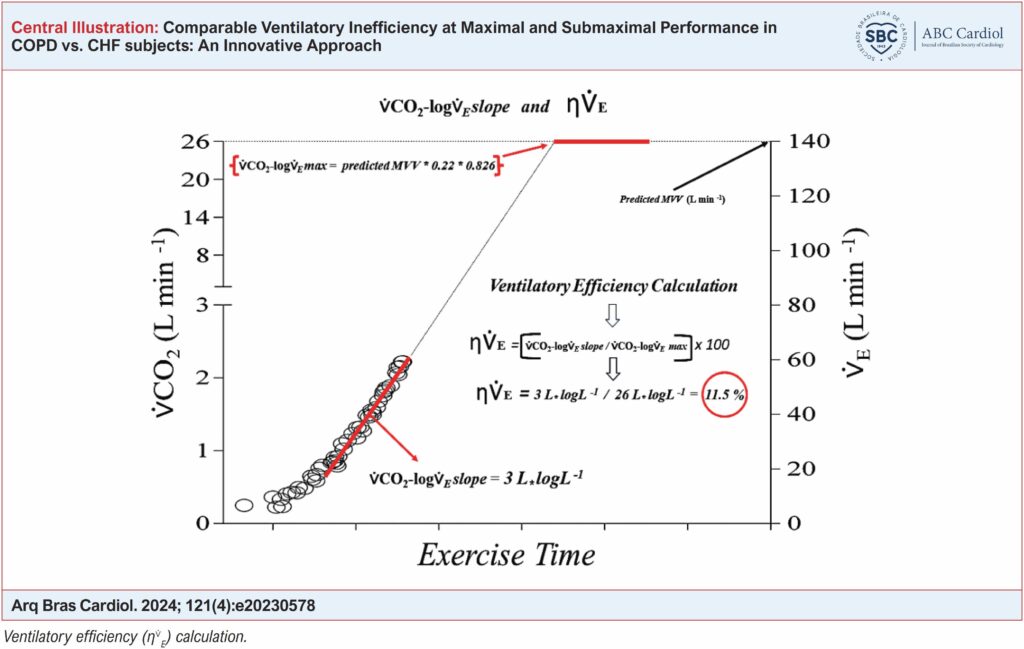Arq. Bras. Cardiol. 2024; 121(4): e20230578
Comparable Ventilatory Inefficiency at Maximal and Submaximal Performance in COPD vs. CHF subjects: An Innovative Approach
This Original Article is referred by the Short Editorial "Ventilatory Efficiency: Is This the Key to Unlock the Full Potential of Cardiopulmonary Exercise Testing?".
Abstract
Background:
Currently, excess ventilation has been grounded under the relationship between minute-ventilation/carbon dioxide output (). Alternatively, a new approach for ventilatory efficiency () has been published.
Objective:
Our main hypothesis is that comparatively low levels of between chronic heart failure (CHF) and chronic obstructive pulmonary disease (COPD) are attainable for a similar level of maximum and submaximal aerobic performance, conversely to long-established methods ( slope and intercept).
Methods:
Both groups performed lung function tests, echocardiography, and cardiopulmonary exercise testing. The significance level adopted in the statistical analysis was 5%. Thus, nineteen COPD and nineteen CHF-eligible subjects completed the study. With the aim of contrasting full values of and for the exercise period (100%), correlations were made with smaller fractions, such as 90% and 75% of the maximum values.
Results:
The two groups attained matched characteristics for age (62±6 vs. 59±9 yrs, p>.05), sex (10/9 vs. 14/5, p>0.05), BMI (26±4 vs. 27±3 Kg m2, p>0.05), and peak (72±19 vs. 74±20 %pred, p>0.05), respectively. The slope and intercept were significantly different for COPD and CHF (27.2±1.4 vs. 33.1±5.7 and 5.3±1.9 vs. 1.7±3.6, p<0.05 for both), but average values were similar between-groups (10.2±3.4 vs. 10.9±2.3%, p=0.462). The correlations between 100% of the exercise period with 90% and 75% of it were stronger for (r>0.850 for both).
Conclusion:
The is a valuable method for comparison between cardiopulmonary diseases, with so far distinct physiopathological mechanisms, including ventilatory constraints in COPD.
770

